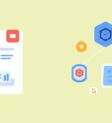
Multi-task AI agents represent the next evolution in artificial intelligence, moving beyond single-purpose machines to systems capable of handling several tasks in parallel—often across various domains. In this guide, we’ll break down what multi-task AI agents are, why they matter, and how to design, build, and deploy them successfully in real-world environments.
Understanding Multi-Task AI Agents: Definition and Importance
Multi-task AI agents are intelligent systems engineered to tackle a broad range of tasks through a single unified framework. Rather than being restricted to a predefined, specialized function like traditional “narrow AI,” these agents leverage shared representations and adaptive learning strategies to solve complex, multi-faceted problems. This cross-domain capability enables them to generalize knowledge efficiently, offer more flexible solutions, and accelerate automation in industries such as healthcare, customer service, and manufacturing.
By embracing a multi-task approach, organizations can reduce development costs, enhance scalability, and drive more comprehensive automation—all while improving the accessibility and effectiveness of intelligent systems. Leading platforms, such as TheAgentBot, demonstrate the transformative potential of deploying multi-task AI in everyday workflows.
Setting Objectives: Aligning Multi-Task AI Agents with Business Value
Clear objective-setting is the foundation for successful implementation of multi-task AI agents. It’s crucial to define both business aims—such as process optimization, cost reductions, and customer satisfaction—and technical goals like latency minimization, increased accuracy, or seamless scalability.
Multi-task AI agents excel when tasked with related processes: a single agent can manage customer inquiries, process orders, and recommend products in e-commerce; or simultaneously track fraud, analyze portfolios, and ensure compliance in finance. By mapping out objectives that reflect your real-world needs, you ensure that the agent directly supports operational improvements and measurable value creation.
To dive deeper into business-focused AI agent strategies, explore proven approaches such as those listed in Best Use Cases for TheAgentBot in 2025.
Designing the Right Architecture: Transformers, Modular, and Hybrid Approaches
Choosing an effective architecture is foundational to building a robust multi-task AI agent. Several frameworks stand out:
- Transformer-Based Architectures: These excel with natural language and vision data, using self-attention mechanisms to manage various tasks within one powerful model. Ideal for scenarios with vast, diverse datasets—although resource-intensive.
- Modular Architectures: Systems are divided into dedicated modules, each specializing in a sub-task. This method allows incremental updates and easier maintenance, though coordination across modules can add complexity.
- Hybrid Architectures: Combine the best of both worlds by using modular routing with transformer “specialists.” This strikes a balance between flexibility, adaptability, and operational complexity, ideal for cross-domain demands.
Before finalizing your architecture, factor in task diversity, available compute resources, performance targets, and long-term maintenance strategies. Tools like TheAgentBot support modular and hybrid approaches, streamlining complex integrations for enterprise projects.
Data Collection and Labeling: Building Reliable Foundations for Multi-Task Learning
Effective multi-task AI agents require high-quality, well-balanced datasets that cover every supported task. Sources often include public repositories, proprietary business data, real-time user interactions, and sensor outputs. Ensuring comprehensive data coverage helps prevent bias and data imbalance—common pitfalls in multi-task setups.
Detailed, consistent labeling is critical. Different tasks may demand unique annotation schemes, so clear guidelines and a layered approach—automated tools for scale, human annotators for accuracy—work best. Regular cross-validation helps spot inconsistencies and maintain accuracy.
Maintaining dataset quality involves version control, lineage tracking, frequent updates to reflect new realities, and scripts to catch duplicates or corrupted data. Carefully documenting changes ensures transparency and smooth future development for your multi-task AI agent initiatives.
Training Multi-Task AI Agents: Strategies for Cross-Task Optimization
Training a multi-task AI agent requires balancing each supported task to avoid conflicts while promoting knowledge sharing. Key steps include:
- Setting specific objectives and standardizing input formats across all data sources
- Designing a unified training pipeline to manage simultaneous loading, task sampling, and smart batching strategies
- Mitigating task conflicts through gradient normalization, loss weighting, or techniques like Gradient Surgery (PCGrad)
- Tracking task-specific metrics individually to identify bottlenecks and further tune performance
Additional optimization methods include tailored hyperparameter adjustments, early stopping criteria for each task, validation against dedicated sets, and periodic review cycles. These contribute to a robust, continuously improving multi-task learning pipeline—key to building agents capable of adapting to evolving needs.
For further information on training processes, check out guides such as How to Train an AI Agent Without Writing Code.
Evaluating Performance: Metrics, Benchmarks, and Robustness Testing
Valid evaluation requires metrics that match each supported task. Classification tasks should use measures like accuracy and F1-score, regressions benefit from mean squared error, and generative tasks might require BLEU or ROUGE scores. Aggregating these scores provides a comprehensive view of overall performance.
Benchmarking your multi-task AI agent against established baselines on datasets such as GLUE or MultiQA helps spotlight strengths and weaknesses. Per-task and averaged results both matter, as do ablation studies to test the importance of each module or component.
Stress-testing under edge cases and adversarial examples is essential for spotting rare failures or vulnerabilities, strengthening the agent before full deployment. Monitor for interference effects—where one task’s learning inadvertently impairs another’s performance, a known multi-task challenge. Comprehensive validation ensures your AI agent remains trustworthy as it scales and evolves.
Deployment and Continuous Improvement: Launching Multi-Task AI Agents in Production
Successful deployment starts with rigorous pre-production testing that mirrors real-world complexity. Integrate full-spectrum monitoring to track metrics such as accuracy, latency, and system performance. Automated containerized deployment via Docker or orchestration via Kubernetes ensures security, scalability, and rapid updates.
For continuous improvement, implement CI/CD workflows to regularly retrain and redeploy the agent with new data. Collect live user feedback and operational data, quickly surfacing areas for optimization. Utilize feature flagging to A/B test new features safely, and maintain thorough versioning and documentation to ensure seamless collaboration across teams and future-proof your AI infrastructure.
For endpoint integrations and advanced automation, platforms such as TheAgentBot can simplify connecting your multi-task AI agent with enterprise tools, speeding up both deployment and iteration cycles.
Conclusion: Unlocking the Next Wave of Intelligent Automation
Multi-task AI agents are poised to revolutionize how organizations solve problems, transforming single-purpose automation into dynamic, cross-domain intelligence. By setting focused objectives, building resilient architectures, and deploying agents with strong data pipelines and robust evaluation frameworks, businesses secure a competitive edge in a landscape defined by rapid innovation and complex needs.
With the maturation of accessible tools and integration platforms, deploying multi-task AI agents is now within reach for organizations of all sizes. For those looking to unlock deeper productivity and deliver broader impact, the era of truly intelligent, flexible automation has arrived.
Learn more about this transformation and how TheAgentBot platform can support your journey here or refer to external resources such as recent industry reviews on IEEE Spectrum.






